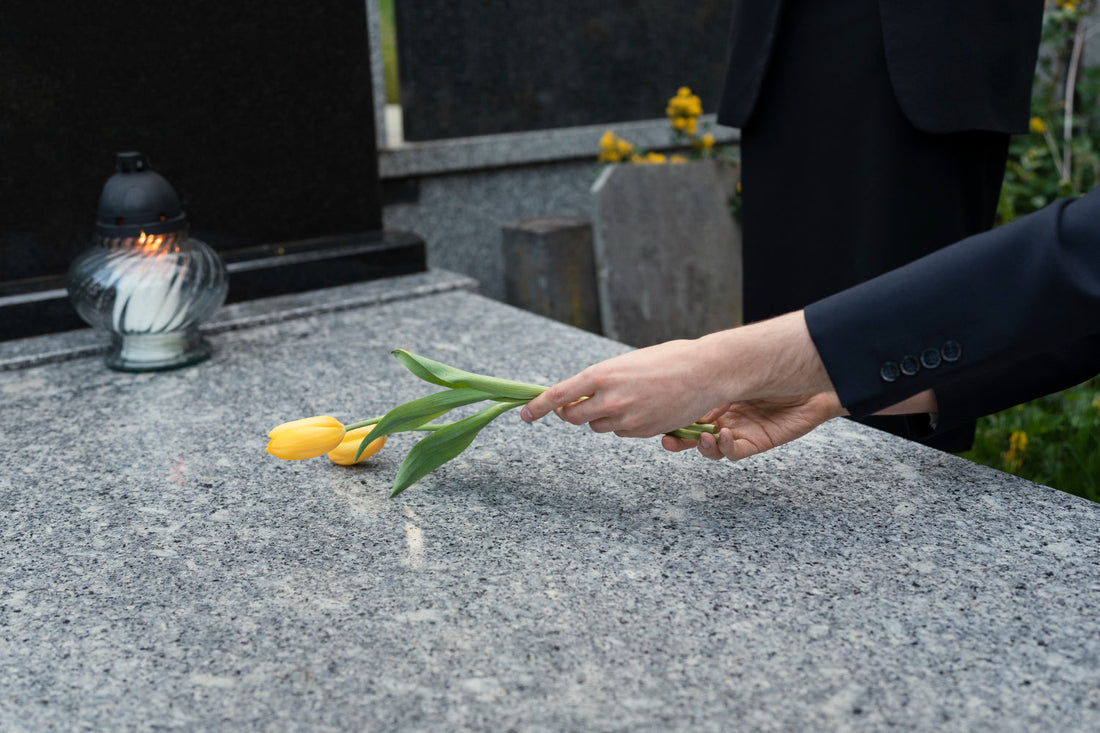
How Does Cremation Work? Full Cremation Process Explained
Share
Cremation has become an increasingly popular choice for final arrangements due to its simplicity, affordability, and flexibility. But many people still ask, how does cremation work? This guide will walk you through every step of the cremation process, from body preparation to the final collection of ashes, while answering frequently asked questions to give you a comprehensive understanding.
What is Cremation?
Cremation is the process of using high heat to reduce a human body to ashes and bone fragments. These cremated remains, commonly referred to as ashes, are then placed into a container or urn for ashes, which may be kept, buried, or scattered depending on the family’s wishes.
How Is a Body Prepared for Cremation?
One of the most frequently asked questions is: how is a body prepared for cremation?
Step-by-Step Body Preparation:
-
Identification and Authorization:
The cremation facility confirms identity using tags or documents. Family members must provide legal authorization for the cremation to take place. -
Removal of Medical Devices:
Pacemakers and other battery-operated implants are removed as they can explode under high heat. -
Cleaning and Dressing:
The body is typically cleaned and sometimes dressed in a biodegradable gown. Although embalming is not required for cremation, it may be done if there is a public viewing beforehand. -
Placement in a Cremation Container:
The body is placed into a rigid, combustible container, often made of cardboard or wood. This container is then inserted into the cremation chamber.
By ensuring proper preparation, the cremation process remains safe, respectful, and compliant with legal and ethical standards.
What Exactly Happens During Cremation?
The Cremation Process:
The actual cremation process takes place in a specially designed industrial furnace known as a cremation chamber or retort.
-
High Heat Application:
The chamber is heated to temperatures between 1400 to 1800 degrees Fahrenheit. The intense heat vaporizes organic matter, leaving behind bone fragments. -
Cooling Period:
Once the cremation is complete, the remains are left to cool for about 30–60 minutes before further handling. -
Processing the Ashes:
The remaining bone fragments are processed in a cremulator—a machine that grinds them into a fine, sand-like consistency. -
Placement in an Urn:
The ashes are carefully placed into a temporary container or a cremation urn chosen by the family. These urns for ashes come in various styles, such as keepsake urns, biodegradable urns, and decorative urns for human ashes.
So, what exactly happens during cremation is a high-heat process that transforms the body into bone fragments and ultimately into a finely textured ash.
What Body Parts Don’t Burn in Cremation?
While nearly all soft tissues are consumed by the high heat, certain parts of the body do not burn completely.
Parts That Don’t Burn:
-
Bones:
Large bone fragments such as the pelvis and skull do not fully turn to ash and require mechanical processing afterward. -
Teeth:
While most of the enamel may crack or vaporize, fragments of teeth sometimes remain. -
Metal Implants:
Surgical implants like hip replacements or dental fillings are collected post-cremation and usually recycled or disposed of separately.
How Long Does Cremation Last?
The cremation process typically lasts 1.5 to 3 hours depending on various factors like:
-
Body size and weight
-
Type of cremation container
-
Temperature of the retort
After the actual cremation, an additional 1–2 hours are needed for cooling and processing the remains. This means families usually receive the ashes within 24 to 48 hours.
Why Cremation Is a Popular Choice Today
-
Environmentally Friendly Options:
Many choose biodegradable urns or water cremation for eco-conscious reasons. -
Cost-Effective:
Cremation is often more affordable than traditional burial. -
Flexibility in Memorials:
With cremated remains, you can plan personalized memorials, scatter ashes in meaningful places, or preserve them in decorative urns at home. -
Space-Saving:
Cremation requires less physical space, an essential factor in urban areas where burial plots are limited.
Popular Cremation Urns and Memorial Ideas
-
Keepsake Urns for Family Members:
Ideal for dividing ashes among loved ones. -
Themed Cremation Urns:
Available in styles that reflect the personality or passion of the deceased, such as military, floral, or animal-themed urns. -
Scattering Tubes or Biodegradable Urns:
For those who wish to return ashes to the earth or water.
Frequently Asked Questions About Cremation
1. What exactly happens during cremation?
Cremation involves placing the body in a high-temperature furnace where it is reduced to bone fragments. These are then ground into a fine ash and returned to the family.
2. What body parts don’t burn in cremation?
Most soft tissue burns completely, but bones and metal implants don’t. Bones are later processed into ash, while metal pieces are removed and recycled or discarded.
3. How is a body prepared for cremation?
After legal documentation and ID confirmation, medical devices are removed, the body is cleaned, and it's placed in a combustible container. It is then ready for cremation.
4. How long does cremation last?
The process usually takes 90 minutes to 3 hours, plus time for cooling and ash processing. Families generally receive the ashes within a day or two.
Final Thoughts on the Cremation Process
Understanding how cremation works helps families make informed decisions during a difficult time. Whether you’re planning ahead or managing a loved one’s final wishes, knowing the details—from preparation and timing to what body parts don’t burn in cremation—offers clarity and confidence.
Choosing the right cremation urn for ashes, be it a decorative adult urn or a small keepsake urn, ensures a lasting and dignified tribute. The cremation process, while scientific in nature, ultimately supports meaningful remembrance.
Your Tribute with the Right Cremation Urn
Explore a wide range of urns for ashes—from classic and simple to ornate and themed.
